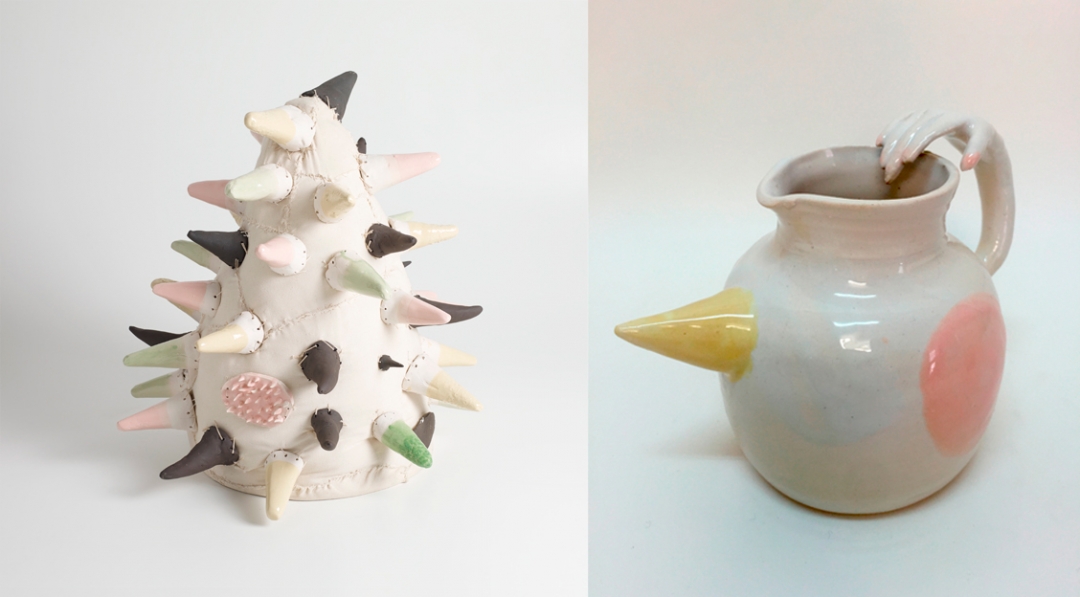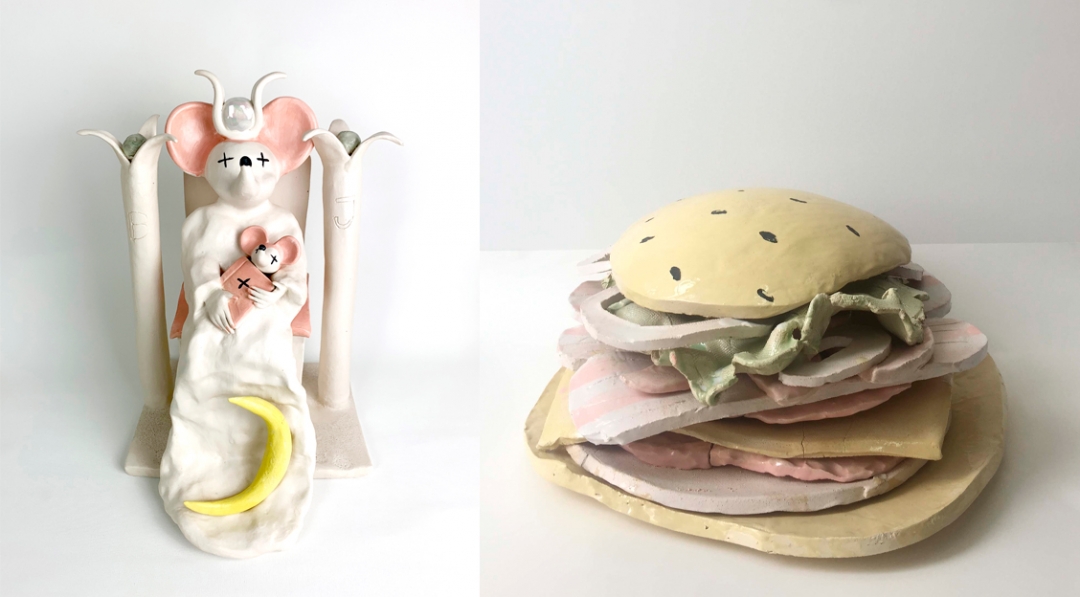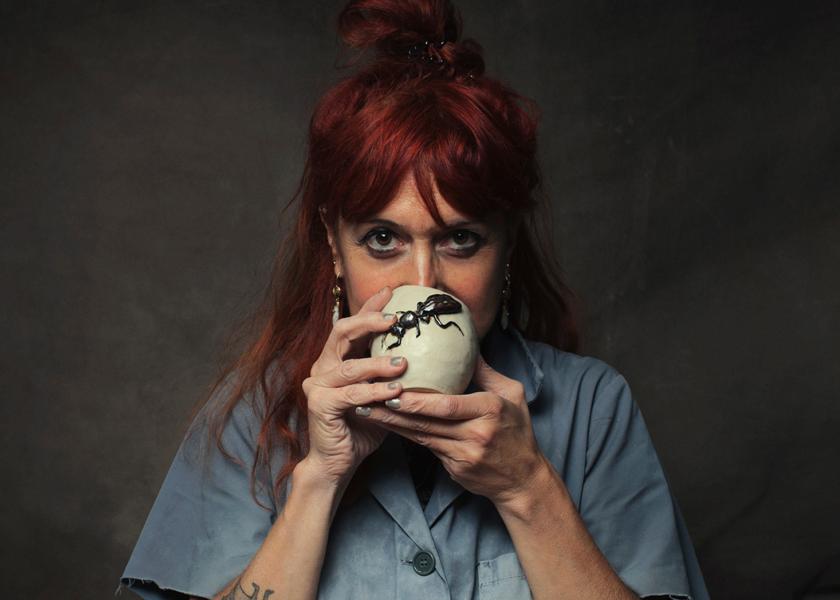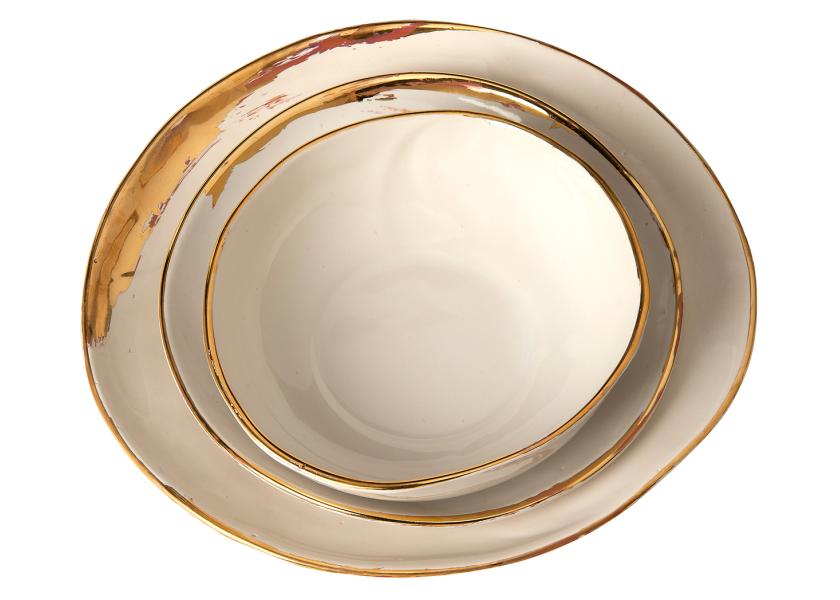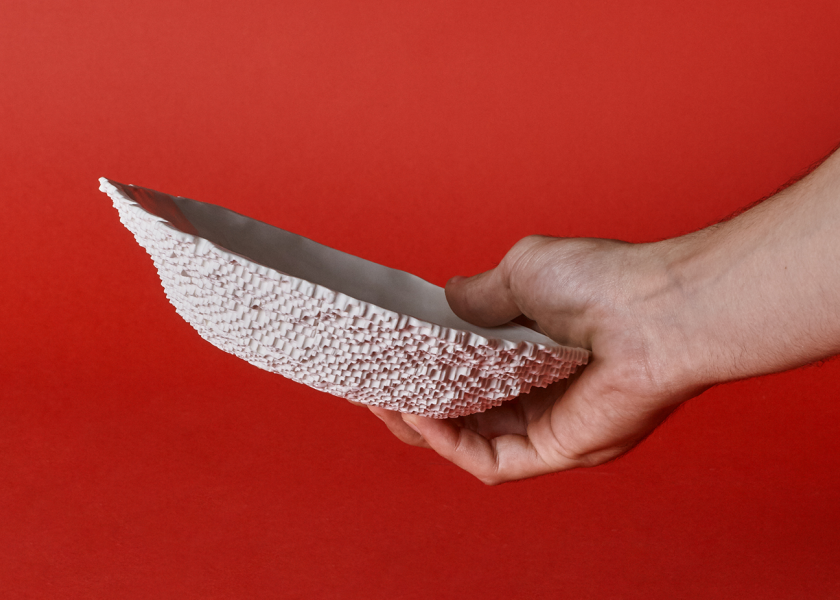Lusesita
Hands Full of Clay

Ceramics and an overflowing imagination, that’s all Lusesita needs to create imaginary beings, animals, and objects with a childlike yet mysterious feel to them. She takes us by the hand to take a plunge into her personal and extraordinary world.
Naïve, childlike, innocent and at the same time mysterious are just some of the adjectives used to describe her work. But none of them quite cover it, because the truth is that every day, the hands and the personal universe of Laura Lasheras (Calahorra, La Rioja, 1970) produce all kinds of imaginary beings, animals and objects, like dinosaurs, teapots, robots, spoons, or unicorns in pastel shades, all of which are difficult to label. Delicate and at the same time fun pieces in pink, turquoise, violet, or green with a very particular style and speaking to both children and adults. “I find it very difficult to define my work; I try to make sure it’s evolving all the time. Sometimes it’s more abstract, sometimes it’s more figurative. I don’t like to be shackled by labels, I prefer to enjoy doing what I feel like doing.”
The one thing that hasn’t changed over the course of her decade-long career is her commitment to ceramics as a means of expression, since she firmly believes in the infinite potential of this material, both for artistic craftwork and for industrial work. Indeed, every day, she discovers new possibilities. Depending on the project, Lusesita uses different types of clay, such as stoneware, faience, or refractories. Additionally, she uses textile materials such as canvas and rigid cotton fabrics, which she sews these ceramic elements on to. “In some of the pieces I sew the ceramics to the cotton fabric by hand, generating a kind of trompe l'oeil that can give rise to the confusion of two such different materials. That mixture of materials and textures produces a series of antagonistic sensations that I try to find and understand—hard and soft, rough and delicate,” she tells Talent on Board.
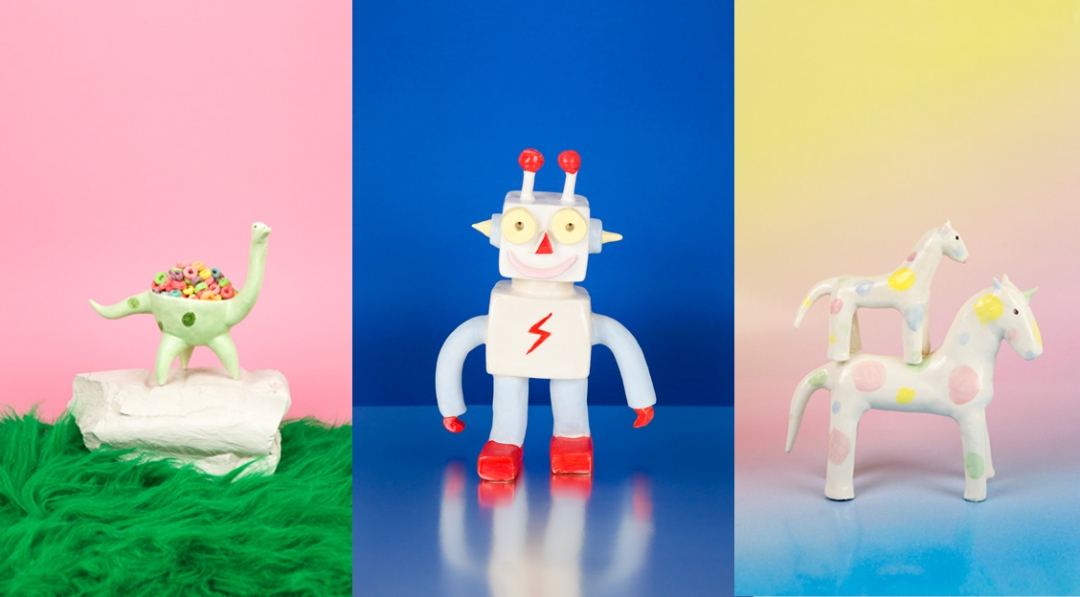
Images from the book ‘Taller de cerámica con Lusesita’ © Courtesy of Gustavo Gili
From mug sets to abstract sculptures
Her passion for this material which, a priori, may seem simple and humble, began at an early age. “As a child I really enjoyed modelling with plasticine, I loved it. Years later, when I was in high school, I discovered ceramics thanks to a wonderful teacher who I still have a great friendship with. I’ve been developing my ideas with clay ever since.”
Lusesita recalls how her early work focused on tea sets and crockery with a surreal touch for special occasions, which were sold in a small art gallery specialised in one-off items. In those days she also created dolls made of fabric and ceramics. However, little by little, her language evolved, and she began to work with larger pieces and, consequently, with other types of galleries—currently with the Alzueta Gallery in Barcelona, the city where she lives, and the Antonio Colombo Gallery in Milan.
Her evolution in the studio in recent years is key to understanding her current work. “My beginnings were much more narrative, making ceramics a bridge between the story of the experience that drew my interest in the work to be done and the construction of the object that symbolised it. But recently, little by little and very organically, the works are becoming more abstract. The freedom I gained over the years means that I now put plasticity before the concept.” Two factors that don’t necessarily conflict with utility, since, according to her, “utility shouldn’t be at odds with art.” Quite the contrary: “That’s the way to make art part of our daily life. As the architect and textile master William Morris said: ‘Have nothing in your houses that you do not know to be useful or believe to be beautiful’.”
Good times for ceramics
But where does Lusesita find the inspiration for such personal work? “Almost everywhere. It’s something very instinctive. What helps me most to get inspired is being connected to myself. On the other hand, an artist is always absorbing to what is going on around them at any given time.” Traveling and discovering new stimuli, visiting museums, listening to music, and nature are sources of inspiration for this artist, an admirer of names such as Rosa Loy, Tal R, Philip Guston, Kiki Smith, Alexander Calder, and Sergio Mora, whose work leaves no one indifferent. “I’ve sold pieces to very different people who, for whatever reasons, connected with my creations. What I see is that either you like my work very much, or you don’t like it at all. There is no middle ground.” (laughs)
While her beginnings in the world of ceramics weren’t easy, more and more people want to get their hands on a piece by Lusesita. A good example of this are her collaborations with other disciplines, such as fashion, the hospitality trade, or decoration. “Seeing your own work through the eyes of other people and from the viewpoint of other disciplines is very enriching,” she says. One of her latest projects has been the book Taller de cerámica con Lusesita (Gustavo Gili), which was initially aimed at children but is equally recommended for anyone who wants to get into the world of ceramics. “I really enjoyed collaborating with Las Coleccionistas, the photographers, who I’ve known and admired for years, and with the whole publishing house team. Listening to other points of view always helps to make good decisions.” The publication of this book has led to other projects, such as her recent collaboration with clothing brand Bobo Choses, as well as other plans she cannot reveal just yet.
Because Lusesita doesn’t stop. She combines her daily work, her collaborations, and exhibitions with workshops that she gives to the people who want to give free rein to their imagination through clay, both adults and children. “I believe that working with our hands humanises us, it’s a magic thing I encourage everyone to practice.” And last, but not least: “A unique piece will always have a different vibe than a mass-produced one.”
